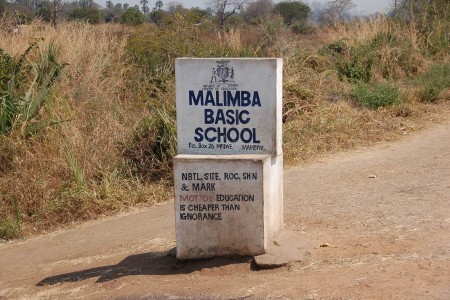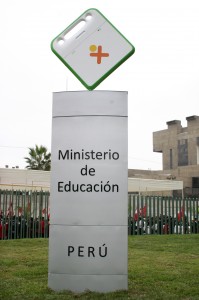Tag Archives: schools
Education is cheaper than ignorance
From rural Zambia:

School computer labs passing out of favor
Mike Trucano, in a typically balanced and measured World Bank blog post, notes that computer labs are coming under increasing scrutiny — and that despite decades of use in the developed world, there is little evidence for them being an effective use of resources given today’s options for discovering computing, learning to use software tools, or connecting to the internet.
Expert opinion, at least in many OECD countries, is increasingly calling into question the reliance on school computer labs as the primary model for impactful use of educational technologies.
He notes the common arguments for teaching with or building computer labs, a countervailing shift towards personal and mobile computing, and the history of the concept.  A good read, and a strong argument for the need for long-term studies to compare and contrast various options without prejudice — so that we cannot again say, decades from now, “The evidence base in support of  <this educational and technological model> is, to my knowledge, not very robust… there is still not a lot of rigorously obtained hard data that we can point to.” We shouldn’t be able to say that about any significant aspect of educational life.
That sort of ignorance in science, business, politics or economics would be utterly unacceptable. Â We should demand more, not less, for our own education — which underlies our capacity to pursue the rest.
0% of XOs run Windows
A stray comment today about Windows not working on ARM machines, by someone who thought all OLPC laptops had moved away from Linux, reminded me to reaffirm something:
Every XO we have ever made shipped from the factory with Linux. The 2M+ XOs running Linux is one of the largest deployments of Linux in the classroom anywhere in the world, and the largest in primary schools.
A few thousand dual-booted into Windows [XP] as well, either at the time they shipped or after being reflashed – after a Microsoft team modded a version of XP for the XO, and our firmware made dual-booting possible. That was an impressive bit of coding and optimization, and Uruguay in particular was interested in dual-boot machines, testing them in classrooms on XO-1’s, but decided not to continue those tests. The only other machines that ever made use of the dual build were part of programs sponsored by Microsoft. In all, under 7,000 XOs have ever run Windows natively, 5,000 in Uruguay. Â That is less than 0.3% of all laptops we have ever produced. (In contrast, running software under emulation through wine or SugaredWine is popular in Latin America.)
I have heard of a few teachers that had those machines in at least one class, in Uruguay or Peru, but have never seen first-hand reports from anyone using them. If you visit or know of a school that tried this please share your stories; I would be interested to hear about the experience.
OLPC Oceania teams up with University of the South Pacific
Mike Hutak, OLPC Oceania director, signed an agreement with the University of the South Pacific this week, committing to work together to further research and teacher training on 1-to-1 Computing in the region.  Mike commented on the handover in Fiji:
USP is the leading teacher training institution in the region with campuses in all 10 Pacific countries where there are OLPC projects. Governments and ministries of education will now have access to the best minds in the region for their country to using the XO laptop in the classroom. And at the Japan Pacific ICT Centre, they will now have access to the best facilities too.
Mike: thanks for the update!
National education improvement, Peruvian style
Peru’s extraordinary Una Laptop por Niño program continues to lead the way for deployments around the world. Most recently, they expanded their program to 100% of Peru’s public primary schools (roughly 20,000 in all), the largest OLPC project  in the world.  On Friday Oscar Becerra, head of ULPN in Peru, reported:
Today at noon President Alan GarcÃa formally inaugurated the new Ministry of Education building in Lima. The building features a monument sign at the front, crowned by an XO computer in its original green and white colors. We hope it will be a lasting memory of the outstanding contribution of OLPC to Peruvian education improvement.
Three cheers for that, and for expansion to a new building! And congratulations to Oscar and President GarcÃa for leading the way in supporting education at all ages with technology and creativity, under a wide variety of conditions. Â I can only hope for similar education reform to reach my own country one day soon.

